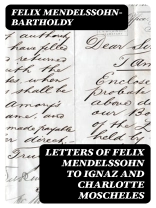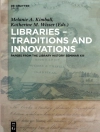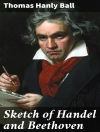In ‘Letters of Felix Mendelssohn to Ignaz and Charlotte Moscheles, ‘ the esteemed composer Felix Mendelssohn-Bartholdy presents a fascinating collection of personal correspondences that illuminate his relationships with fellow musicians and friends. The letters, characterized by their eloquent prose and candid reflections, reveal Mendelssohn’s thoughts on the artistic challenges of his time as well as his perspectives on the cultural milieu of 19th-century Europe. This literary endeavor serves as both a historical document and a glimpse into the life of a composer who navigated a world rife with political upheaval and evolving musical trends, effectively marrying his keen observations with poetic language. Mendelssohn himself emerged from a prominent Jewish family that converted to Christianity, a context that shaped his views and interactions within the artistic circles of his day. His close friendship with Ignaz Moscheles, a celebrated pianist and fellow composer, further enriched his life and provided fertile ground for intellectual exchange. Mendelssohn’s passion for music and profound understanding of its emotional depth are vividly articulated in these letters, which reflect his commitment to fostering a shared musical heritage. This collection is a must-read for anyone interested in musical history or the personal insights of one of the great Romantic composers. Mendelssohn’s correspondence not only enriches our understanding of his creative process but also offers invaluable perspectives on the artistic community of his time. Readers seeking a deeper appreciation of Mendelssohn’s multifaceted character and societal challenges will find these letters both illuminating and moving.
Despre autor
Felix Mendelssohn-Bartholdy (1809–1847), born Jakob Ludwig Felix Mendelssohn Bartholdy in Hamburg, Germany, was a prolific composer, pianist, organist, and conductor of the early Romantic period. His compositions include symphonies, concertos, piano music, and chamber music. His distinctive musical style combines classical forms with romantic content, characterized by lyrical melodies, rich harmonies, and his use of programmatic elements. Notable examples of his work include the ‘Italian’ Symphony, the incidental music for ‘A Midsummer Night’s Dream’, which features the famous ‘Wedding March’, and the ‘Scottish’ Symphony. As a musician esteemed for his education and refinement, Mendelssohn was also active as a musical organizer, notably reviving interest in the music of Johann Sebastian Bach through his performance of the St. Matthew Passion in 1829. His correspondence, particularly the ‘Letters of Felix Mendelssohn to Ignaz and Charlotte Moscheles’ (Kloppmann, M. ed., 1888), provides valuable insights into his personal and professional life, his relationships with contemporaries, and his artistic convictions. Mendelssohn’s prolific output and his blend of the classical tradition with new romantic trends made him one of the leading figures in the world of music during his lifetime, and his influence persisted long after his premature death at the age of 38.












